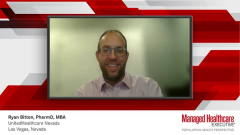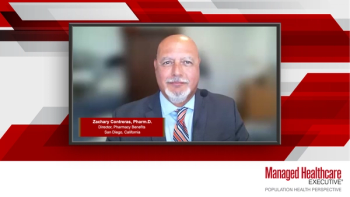
Economic Impact of HIV
The financial burden associated with HIV and the potential effects of PrEP uptake on overall costs of care.
Episodes in this series

Moti Ramgopal, MD, FACP, FIDSA: What is the cost and utilization of someone who’s positive for HIV today? When we look at drug costs, medical care costs, laboratory costs, they all add up. And this is not being admitted to the hospital. Prior to the new advent of treatment for the last 10 years, we would see a significant amount of people admitted to the hospital for medical conditions, cryptococcal infection, acquired pneumocystis. And that number runs into hundreds of thousands of dollars per hospitalization.
Now, fewer people are being admitted to the hospital. They have costs related to medications. What does that look like? You’re looking at probably around $50,000 a year minimum in cost of care for each individual, where the physician cost is the lowest of that. Medication costs run about $50,000, laboratory costs add up to probably $5000 to $10,000 a year. And physician cost is just in the hundreds of dollars. When we look at the full cost of care of a patient with HIV who’s not admitted to the hospital, who is not with any significant comorbidity, you’re looking at $50,000 to $60,000. If you add comorbidities, cardiac disease, kidney involvement, renal involvement, and liver involvement, that number will run $80,000 easily.
When you look at the cost of PrEP [pre-exposure prophylaxis] now, which is relatively much cheaper, you can clearly see that preventing 1 case of HIV for a lifetime is such a significant improvement in your cost. For example, the cost of providing PrEP is probably less than $1000 a year, in that range. Then you look at the numbers over 10 years, and if you prevent that 1 infection, you can run the numbers and see the impact it has on the cost of HIV.
Douglas Krakower, MD: The economic impact of HIV is still substantial in this country. There are well over 1 million people who are living with HIV, and because it’s a lifelong infection without a cure right now for the vast majority of people, people need to be on medications, usually on a daily basis indefinitely, and so that cost adds up. It’s certainly well worth it in a population level value, but it is an expensive process to keep people in treatment for HIV infection, particularly because most of the commonly used medications are still relatively expensive, upward of $20,000 per year for most of the regimens that are brand name right now. PrEP could certainly have a very important economic impact if it keeps people from becoming HIV positive.
PrEP doesn’t have to be lifelong. It can be used for people during periods when they may be engaged in behaviors that put them at risk for HIV acquisition. Unlike lifelong treatment for HIV, it could be more economically efficient over someone’s lifespan if they can intelligently choose when to use it and when not to. There have been some studies done years ago looking at the cost-effectiveness of PrEP, and the early studies showed that it’s definitely going to be cost-effective if you’re able to implement it in populations where the risk of HIV is highest. For example, men who have sex with men who have had bacterial sexually transmitted infections is a group that traditional epidemiology has shown has an increased risk for HIV acquisition, and PrEP has shown to be cost-effective in certainly that group.
Now, in 2021, we actually have generic PrEP medications, which is a relatively new phenomenon just in the past year, so that entire conversation about cost-effectiveness and economic impact has shifted. If we can engage more people in the use of very inexpensive medications, then the economic impact on HIV as a population health consideration can be really great. That should be on a societal and policy level, a strong motivator for getting the most cost-effective versions of PrEP out there to as many people as possible.
Transcript edited for clarity.
Newsletter
Get the latest industry news, event updates, and more from Managed healthcare Executive.




















































